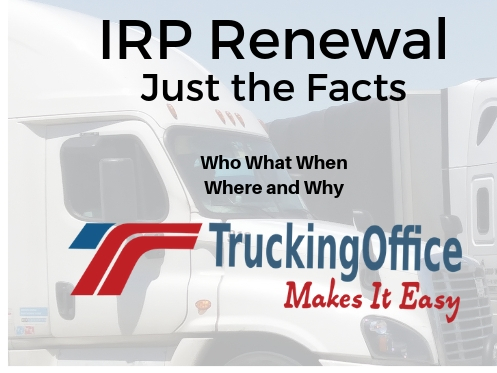Every year, thousands of truck drivers flock IRP offices and stand in lines for hours waiting to renew their credentials. In many cases, what follows this are inaccurate charges, penalties, and processing delays, which sometimes end up putting truckers off the road. Luckily for you, we have explored the five W’s of IRP renewal in a bid to save you from all these predicaments.
What Is the IRP Meaning?
IRP is the short form for International Registration Plan. Put simply, it refers to a program that registers commercial trucks that operate in two or more member jurisdictions. All states (except Hawaii and Alaska) and ten Canadian provinces are members of this plan.
Who can Renew the International Registration Plan?
To renew IRP plates, you must first qualify to register in your base jurisdiction. That means you must be a resident of your state or province and have a permanent place of business there. In any case, you must provide proof. More importantly, your commercial vehicle must meet at least one of the following requirements:
- Have two axles and registered gross vehicle weight (GVW) of over 26,001 lbs (11,794 kg) or more
- Be a power unit with a minimum of three axles, no matter the GVW
- Be in use in combination with a combined GVW of 26,001 lbs (11,794 kg) or more
When and How Does IRP Renewal Work?
In all member jurisdictions, renewing the International Registration Plan is an annual process. Depending on your state/province, they can send renewal notices weeks or even months before the registration expiration date. Oklahoma IRP renewal notifications, for instance, are mailed three months before the due date. This is mainly intended to allow you time to complete, sign, and send back before your account expires.
In many states/provinces, renewing the International Registration Plan can be done online. With Texas IRP, however, you’ll have to mail your renewal applications or visit the office in person.
Required Documents
If you intend to make any amendments during renewal, you must accompany all the required supporting documentation with the applications. For example, you’ll need to complete:
- For International Registration Plan, Schedule B
- Schedule C to make changes (additions or deletions) to an existing account, and
- Schedule F to add jurisdictions to an existing account.
- Federal Schedule 1 for vehicles registered at 55,000 lbs (24948 kg) or more
Once the renewal process is successful, an invoice will be mailed to you. After making the payment, you will get IRP plates and a cab cad for each apportioned truck in your fleet. The two identical license plates are what you attach at the front and back of your vehicle while the card displays all the necessary info about your truck.
Electronic Credentials
With the implementation of the electronic credentials program, cab cards are no longer as important as they used to be. An electronic image on your smartphone, tablet, or computer will serve you right every time the law enforcement officers stop you. Therefore, make sure it’s easily accessible, readable, and accurate, no matter the format.
TruckingOffice Can Help!
Without a doubt, renewing your IRP plates is not an easy process. It’s even more complicated if you have a large number of vehicles in your fleet. But fret not! TruckingOffice is committed to helping you take the hassle out of running your trucking business.
Our trucking management system can streamline all your trucking operations, including IFTA and IRP reporting, accounting, fleet maintenance, and more. Want to discover all that for yourself? Sign up for a one-month free trial. We bet you won’t regret it!







Recent Comments